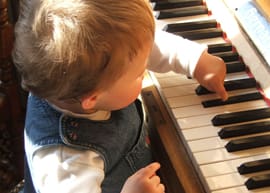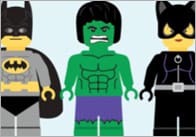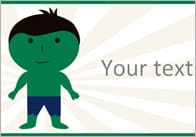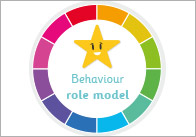Reading Music the Easy Way

There are many reasons why you are introduced to different activities as a child. Sometimes it’s because everyone in your family is very interested in a particular sport or perhaps you show a natural aptitude for music. As no one in my family was very interested in sports I’ve grown up with quite a nonchalant view of them, but something that everybody did in my house was play the piano. And before you start to think that I come from some kind of dynasty, let me just stress that (unfortunately) it really was only ever playing for pleasure.
Although I tinkered around with the piano a lot as a child, mostly bashing out duets with my cousins, I didn’t actually start proper lessons until I began secondary school. I think this is probably because I was a very impatient child and my parents just didn’t think I would be able to sit still for a whole hour. Whatever the reason, I didn’t start learning properly until I was 11 and although I enjoyed it, there was something missing for me. And I think it was probably the fun. Because I could already read a lot of the music (half of it in fact, from my short-lived days of recorder playing) and I had a basic grasp of finger placement on the keys, we didn’t really start at the beginning. The problem with this is that although I could play the pieces relatively well, I had a tendency to memorise them rather than looking at the music. This created considerable problems later on, as half way through a piece I would forget what came next and have no idea where I was on the page. Safe to say this used to drive my piano teacher completely mad. Eventually she did manage to force some musical theory into my head, and from then on I did have more idea about where I was on the page, but it was an uphill battle.
A few years later I started teaching piano myself, but to much younger children (the oldest was only 8). After my own experiences I didn’t want my pupils to fall out of love with reading music as quickly as I did, so I was determined to make it more enjoyable. I tried to make reading music into a game, all of the notes had their own names and lived in their own little white houses on the piano. At first I labelled the keys, but soon everyone knew that Annabelle lived next to Bertie, and that he was only a step away from Cliff. We used to tell stories about the characters using the sheet music, so Cliff would be wandering along for 4 beats and then suddenly bump into Edgar, who would carry on the journey and perhaps pick up his friend Fred for 2 beats as well. The stories went on and on. And they really worked.
The moral of this story isn’t that you should start your child’s music lessons very young, because for some children (like me) it just won’t work. The point is that we need to try and make every aspect of learning fun, especially ones that seem quite mundane (like reading music). We have recently created some new resources especially aimed at helping children learn music, with sheets specially designed to help them understand the basics of music theory and mnemonics to help them remember the position of notes on the staff.
If you have any other ideas for resources we could make relating to music then please let us know, as we are always looking for new ideas! You can email me at abby@earlylearninghq.org.uk.
Popular Teaching Resources
Stay Up To Date
Sign up for our newsletter and we’ll let you know when we create new early years resources.





